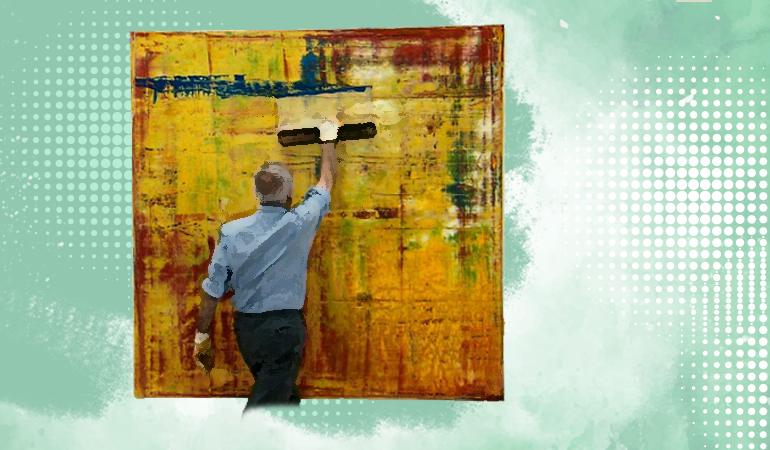Modern Indian Art Series: The Progressive Artist Group of Post-Independence India

Modern Indian Art Series: The Progressive Artist Group of Post-Independence India
The emergence of the Bengal School of Art in the pre-Independence era happened as a revival reaction to colonial suppression of original Indian art. Prominent artists like Nandalal Bose, Abanindranath Tagore, Asit Kumar Haldar were part of this revivalist movement while artists like Bahadur Khan and Raja Ravi Verma continued with commercial art production, mixing the European style of art with ‘desi’ elements.
Art in India after 1947
After India gained independence, a new artist movement emerged in India to break free from the revivalist movement brought about by the Bengal School of Art. The havoc that Indian Independence brought on the lives and livelihood of people deeply influenced artists, ushering in a new era of modern art.
The Progressive Artist Group, referred to as ‘heralds of a new dawn in the world of Indian art’ by Mulk Raj Anand, was formed in 1947 in Mumbai, just after the independence of India. And we will start our series on post-independence Indian art with them.
Who were the Progressive Artists?
The famous artists of this school included F. N. Souza, S. H. Raza, M. F. Husain, K. H. Ara, H. A. Gade, and S. K. Bakre who promoted a more progressive style of painting to compete with international standards. The movement started with Souza, Raza and Ara who were unhappy with the judgment process of the Indian exhibitions and soon became disillusioned by it. The selection process of the exhibitions were arbitrary and often partial. These artists aimed to bring greater transparency by setting up a judging committee that gave emerging artists a fair chance to display their art. This marked the beginning of what we call Modern Indian Art post-Independence.
Keeping up with this tradition at Zeoline Art Gallery, we aim at working as a platform for emerging artists, and can boast of being a leading modern art gallery of Kolkata.
How did the Progressive Artist Group start their journey?
The group started with the determination to showcase works of Raza, Souza, Ara and Bakre, who were the initial founding members. Later, Souza convinced Hussain and Raza convinced Gade to become a part of the group. While they initially intended to stick to this member composition, the group slowly expanded to include Manishi Dey, Ram Kumar and Tyeb Mehta. Krishen Khanna, Mohan Samant and V.S. Gaitonde became part of the group by 1950. The style of the artists differed greatly and cannot be grouped under one umbrella. However, the overarching style or approach was the harmony of Indian images and themes with Western artistic techniques influenced by modernism, impressionism, expressionism and cubism.
Who were the greatest Progressive Artists?
Gade, Ara and Souza are among the most recognised artists in this group. Ara’s work was characterised by gouache and watercolour paintings resembling native tribal and folk art styles. Souza showcased a mixed form of art where he brought together Goan folk art and Cubism. Gade on the other hand, worked more with abstract forms and landscapes. Raza and Husain were the two most recognised artists of this school. Raza’s work stands out for his fluid Expressionist watercolour landscapes. Later he moved towards abstract and geometric forms in his paintings. Husain portrayed a melange of tribal, folk and mythological elements, harmonising it with authentic cubism and symbolism, creating the most powerful pieces of art of his time.
How did the Progressive Artist Group disband?
Despite their immense success and reach, the group soon disbanded as three of the key members moved overseas. Souza and Bakre went to London and Raza moved to Paris. Husain also became famous and started travelling constantly between Delhi and Mumbai. This affected the functionality of the group and each artist focused on individual work. While some periodic exhibitions happened through the first half of the 1950s, the group officially dismembered in 1956.
The artists however, continued to make a powerful impact with their individual works. Despite its short span of existence, the Progressive Artist Group is the first major movement in the art of free India.
Zeoline Art Gallery, one of the leading modern art galleries, showcases select works by some of the prominent artists of this group, and much more.

